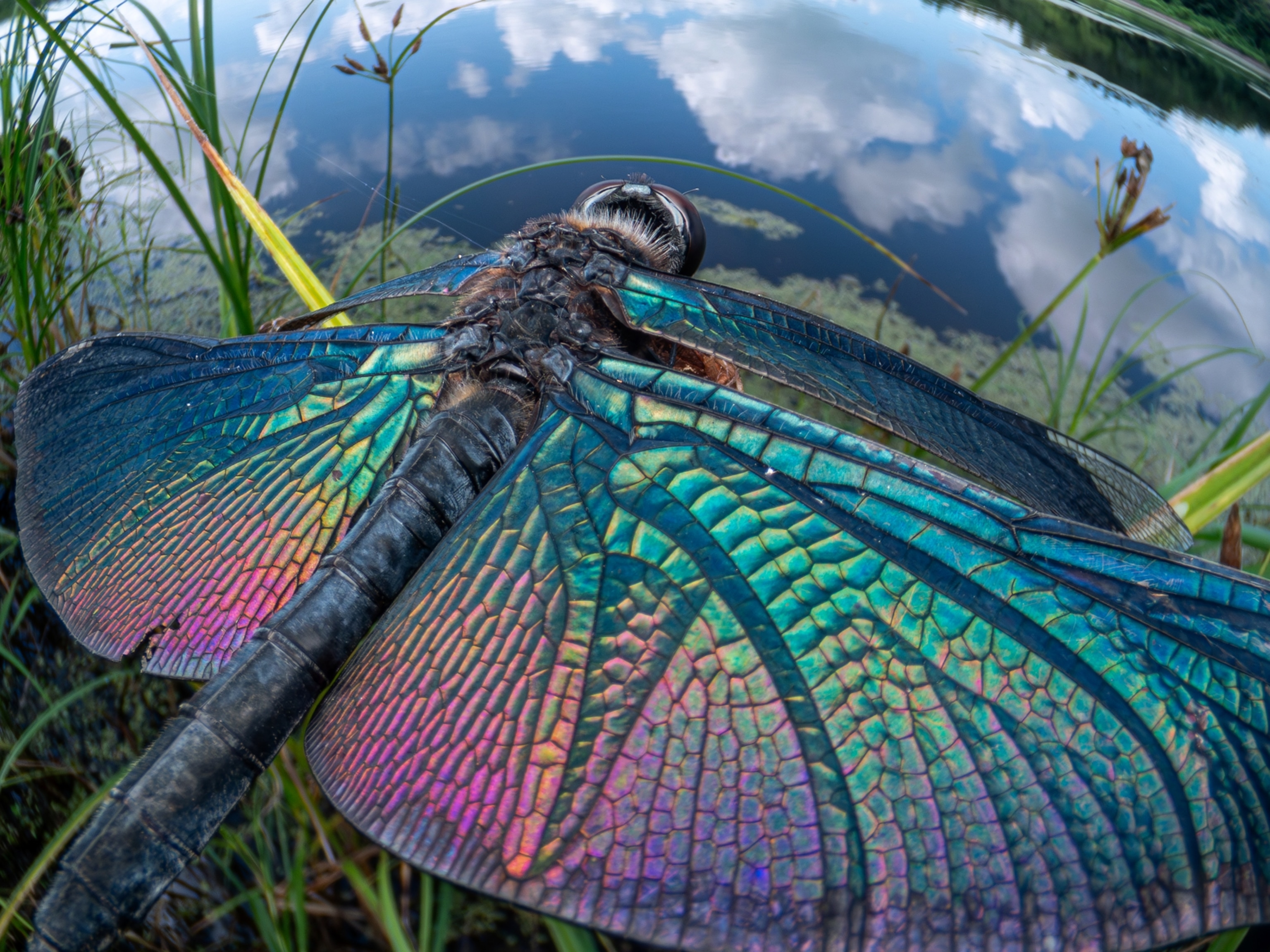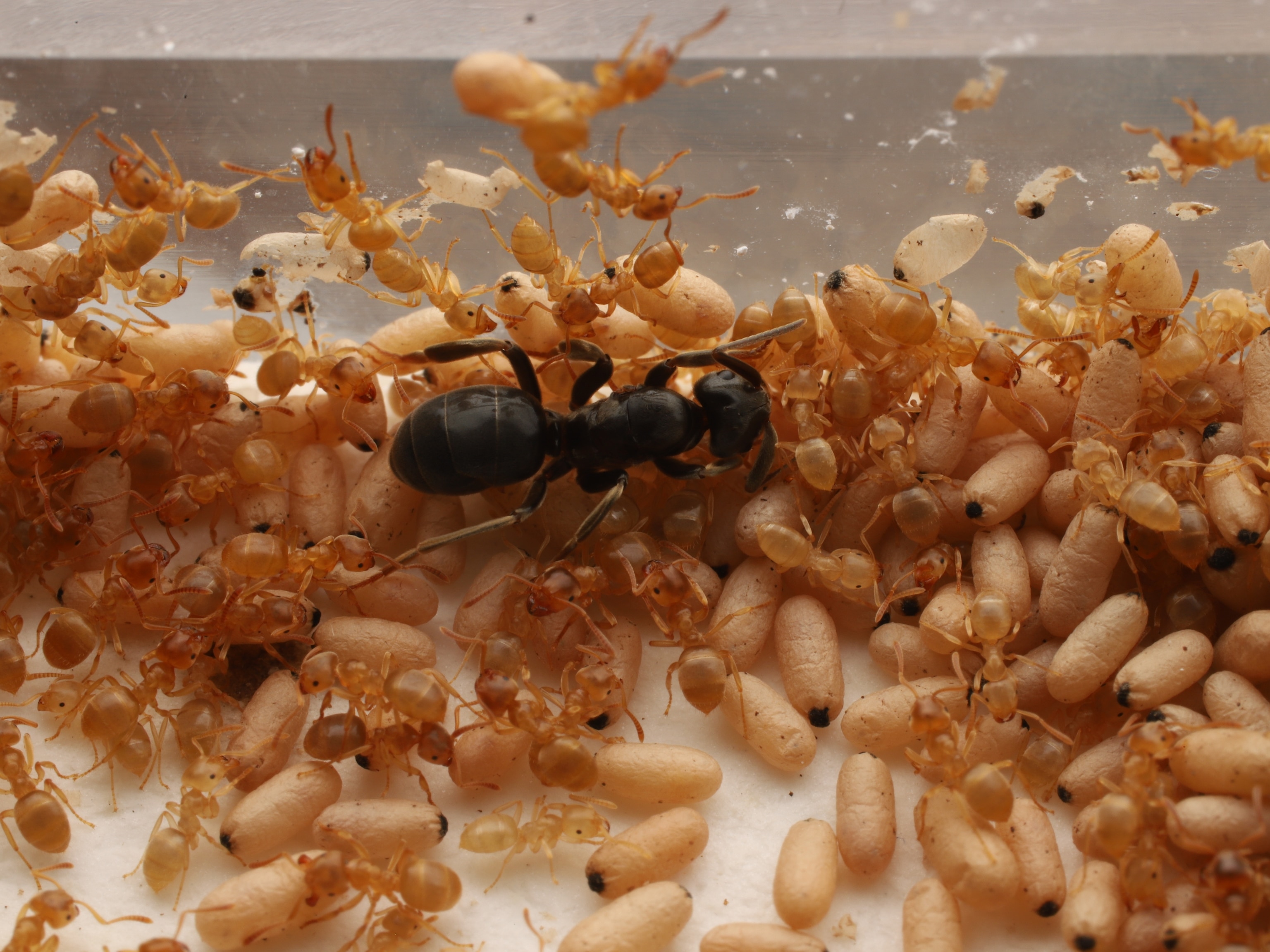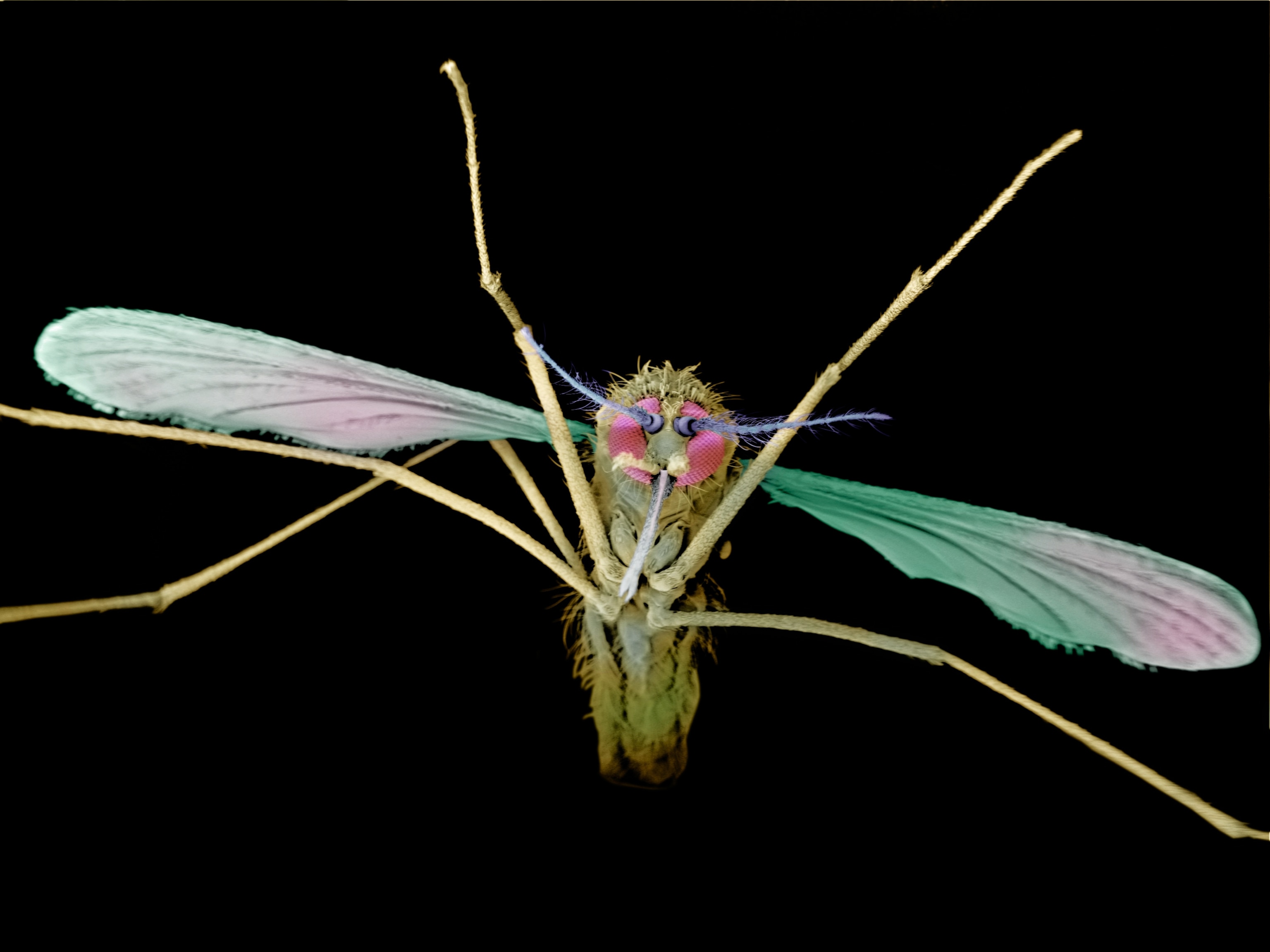Sitting on her throne at the heart of a honeybee colony, the queen reigns over every aspect of her kingdom, from how workers forage to the construction of new combs.
She accomplishes this impressive feat via invisible chemical compounds called pheromones. As the queen’s subjects groom her, they pick up the information-rich molecules and circulate them throughout the colony.
Sent via air, on land, and even in water, these chemical calls of the wild relay messages regarding sexual availability, territory, and the best places to find food.
“A pheromone is a signal that has evolved from the point of view of the sender,” says Tristram Wyatt, a zoologist at the University of Oxford in the U.K. who studies the evolution of pheromones.
For instance, one compound in honeybee pheromones suppresses worker bees from crowning another queen, thus guaranteeing the monarch’s rule. (Read how humans are hijacking scent, the universal animal language.)
That’s different than, say, a mosquito tracking down an animal by its odor, since the animal is not issuing the scent for its own benefit, Wyatt notes.
Tricky mammals
Though our knowledge of pheromones has skyrocketed in recent decades, scientists didn’t identify the first one (bombykol, the scent of the female silkworm moth) until 1959.
The female moth’s “perfume” can be carried for miles, eventually reaching the pheromone receptors on a male’s antennae. When he hits an air pocket containing the chemical, he’ll fly upward and zig zag until hitting another, following the chemical trail back to the female.

Scent cues also work well underwater, and fish and crustaceans have highly developed senses of smell to detect them.
American lobsters mate in private dens, and dominant males will telegraph their hierarchy through pheromones in their urine, which attracts females to their lair.
Mammals, on the other hand, have a more complicated body chemistry and complex set of behaviors, making it harder to gauge their responses to scent cues such as pheromones.
Scientists have found some domesticated species, like pigs, dogs, horses, rats, and mice, respond to scent cues and pheromones. Sensory neurons deep in their noses signal the brain’s limbic system—a primitive part of the brain that regulates emotions and memory—to act.
Laboratory mice, for instance, are social creatures, and use pheromones to express a variety of information, including dominance, through chemicals in their urine. As males become more powerful in their group, they excrete more urinary proteins to signal their status, and thus their attractiveness, to females. (Read how mouse tears can be aphrodisiacs.)
“Stink flirting”
Some scientists have studied pheromones and scent cues in wild animals, such as Madagascar’s ring-tailed lemurs.
The males of these tree-dwelling primates rub secretions from their wrists and shoulder glands onto their tails, wafting the scent toward females in a process known as “stink flirting.” Christine Drea and colleagues at Duke University have found 122 distinct compounds in male lemur secretions.
Researchers at the University of Tokyo recently added to that scent profile, finding three additional chemicals called aldehydes, which caused the females to linger longer around the male’s scents.
“We are surprised that the identified odors in this study smell relatively good to humans —fruity and floral,” says study co-author Kazushige Touhara, a biochemist at the University of Tokyo.
To be considered sex pheromones, these odors will have to be shown to affect only lemurs and increase their mating chances, Touhara says. If that is the case, they would be the first sex pheromones ever found in primates.
Humans have a good sense of smell, but there is no scientific consensus that we have sex pheromones, Wyatt says. Since we’re mammals, it’s likely we use other chemical communication, such as detecting and avoiding people with infections or diseases.
Hormonal behavior
Hormones act as scent cues as well.
In one study, published in Hormones and Behavior, scientists found men considered a woman’s scent more attractive when she was ovulating, and therefore the most fertile. That’s likely because men can detect cyclical changes in women’s hormones, such as an elevation in estrogen.
The well-known hormone testosterone also causes many male animals to change their behavior. Male African elephants go through an annual, month-long period of testosterone surge called musth, signaling their willingness to fight other males for dominance over a herd.
A male in musth is more aggressive and interested in mating, similar to a deer in rut. Juvenile male elephants, conversely, release a scent during the musth period that smells like honey, which signals to other males that they’re not a threat.
Calming scents
Other uses for pheromones include navigation, feeding young, and even staying calm.
While out foraging, several species of ants leave “trail pheromones,” a sort of chemical bread crumb trail to guide themselves and each other to the best sources of food.
Newborn European rabbit pups respond to a mammary pheromone released from glands around the mother’s nipples that enables them to quickly find the nipples and nurse. The pheromone is present in the mother’s milk as well.
And you may not even realize there’s some secret smells circulating in your own home.
Domestic cats have scent glands in their faces and will nuzzle this smell onto objects, other animals, and people. Called “bunting,” this behavior has a calming effect on your feline friend.









